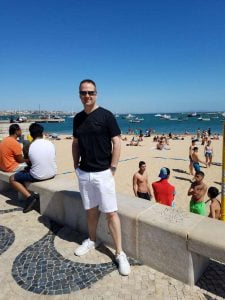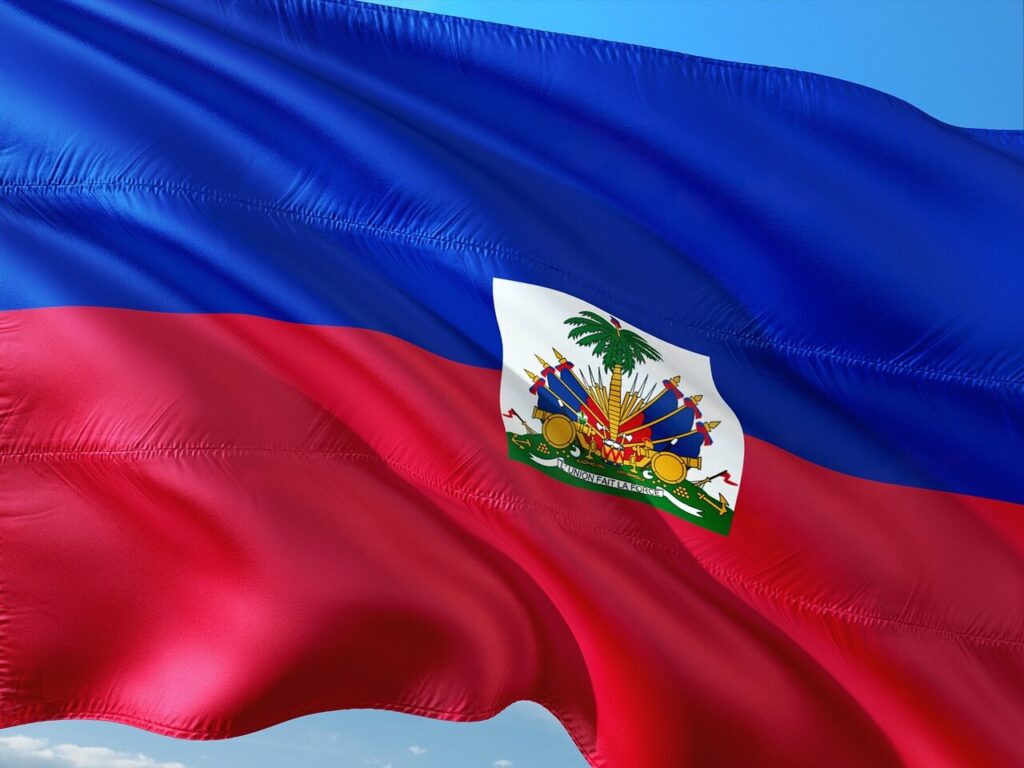Table of Contents
What is Kompa?
Kompa, also known as Compas or Konpa, is a dance form & music originating from Haiti. It is a fusion of African, European, and Caribbean influences, creating a unique and infectious rhythm.
Kompa embodies the vibrant and diverse cultural heritage of Haiti and has gained popularity globally for its sensual movements and music.
DISCLAIMER: Our Kizomba Embassy site contains affiliate links. If you buy something through one of these links or promo codes, you won’t pay a penny more, but we will get a small commission, which helps keeps the lights on. Additionally, we are an Amazon Associate and earn from qualifying purchases.
Where does it come from?
Kompa evolved in the 1950s and 1960s, specifically in the capital city of Port-au-Prince, Haiti. It grew out of the traditional Haitian merengue, infused with elements of big band jazz, cha-cha, and other Latin American dance styles.
The influential artists such as Nemours Jean-Baptiste, Webert Sicot, and Nemours Jean-Baptiste contributed to the development of this genre, creating a distinct sound that is synonymous with Kompa.
How is it danced?
Kompa dance features close partner work, emphasizing a strong connection between the dancers. It is characterized by smooth and flowing movements.
The dance style relies heavily on body isolations and sensual hip movements, reflecting the African and Caribbean influences. Kompa is known for its sultry and romantic nature, allowing dancers to express their emotions and sensuality through their movements.
How can I dance Kompa?
To dance Kompa, one must embrace the infectious rhythm and embrace the close connection with their partner. Here are a few steps to get you started:
- Stand facing your partner with your arms comfortably wrapped around each other.
- Begin by swaying your hips gently to the rhythm of the music.
- Move your feet in sync with the beat and maintain a nice flow.
- Explore body isolations, emphasizing your hip movement and fluidity in your upper body.
- Maintain eye contact and connection with your partner, allowing the chemistry and emotions to flow through your movements.
- Remember, the most important aspect of Kompa is to enjoy the dance and let the music guide your steps.
What music is it danced too?
Kompa is danced to the eponymous Kompa music. The music is driven by a prominent drum rhythm called the “tambour,” which is complemented by guitars, horns, and keyboards.
The melodies are rich, and the lyrics often tell stories of love, life, and sociopolitical issues. Kompa music is characterized by its infectious beats, lush harmonies, and catchy melodies that invite dancers to hit the dance floor with enthusiasm.
Where is it popular to dance Kompa?
Although rooted in Haiti, Kompa has gained international recognition and popularity. It is particularly cherished in the Caribbean diaspora, including communities in the United States, Canada, France, and the Dominican Republic.
Kompa continues to captivate enthusiasts and music lovers, not only within Haitian communities but also among dance enthusiasts globally.
Dance Festivals featuring Kompa music and Kompa dancing
Several dance festivals celebrate Kompa music and the art of Kompa dancing. One notable festival is “Haitian Compas Festival” held annually in Miami, Florida. This event brings together renowned Kompa artists, dance workshops, live music performances, and exciting dance competitions.
Another prominent festival is the “Festival International de Jazz de Port-au-Prince,” which showcases a wide range of musical genres, including Kompa, providing a platform to celebrate Haiti’s rich musical heritage.
The Eiffel Tower Kizomba Festival also features Kompa music and Kompa dancing each year in Paris. This year, the festival has devoted a larger amount of time specifically for Kompa dancing.
Difference between Kompa and Kizomba
While Kompa and Kizomba share some similarities, they are distinct dance styles. Kizomba originated in Angola and has a different tempo compared to Kompa.
Kompa is danced on eight beats and the main steps are similar to walking in place or in a circular pattern.
Both dances embody sensuality and allow dancers to connect intimately with their partners, but they maintain their distinct styles and origins. Here is a good video in which the young lady shows the difference between Kizomba & Kompa.
Difference between Kompa and Zouk
Kompa and Zouk are both genres infused with Caribbean and African influences, but they have distinct characteristics. Zouk originated in the French Caribbean islands and has a much different tempo compared to Kompa.
Zouk incorporates more sensual and flowing movements, often emphasizing body rolls and undulations. Kompa, on the other hand doesn’t. The main difference comes down to the music. Both dance styles offer unique expressions and interpretations of the cultural influences in the region.
In conclusion, Kompa is more than just a dance; it’s a celebration of Haitian culture and a testament to the resilience and creativity of its people. As this vibrant rhythm continues to captivate audiences globally, Kompa remains a testament to the power of music and dance to transcend borders and unite people across the world.
If you enjoyed this article, then please share it with your friends and colleagues! Feel free to leave a comment below! Also, don’t forget to join the Kizomba Embassy Facebook Group and email list to keep up to date on future Kizomba news!

Brian Moran CEO of Kizomba Embassy
Brian Moran is a Salsa, Bachata & Kizomba dancer from New York City. He has been fortunate to live and work abroad in Europe, Asia, and the Caribbean for over 13 years.
While living overseas, he has attended hundreds of international dance festivals and events and has taken classes with some of the top professional Salsa, Bachata, and Kizomba Instructors worldwide.
About Us
The Kizomba Embassy was founded in the Washington, DC Area with Team members and also instructors worldwide! Indeed we are passionate about Kizomba!
We are also dedicated to growing the kizomba community by highlighting all styles of kizomba. This includes dance instructors, artists, festivals, news, and also events around the world!
This also includes Kizomba, Semba, Urban Kiz, and Kiz Fusion. We are also a multilingual website.
For the latest information on Kizomba Festivals around the world certainly, check out the
Kizomba Embassy Events Calendar here!
If you would like to add your Kizomba Festival to our Calendar then you can do so here!
Also, join the Kizomba Embassy Facebook Group here!
Additionally, follow us on Instagram here!
You can also catch up on our latest blog posts here!
For Bachata lovers check out our new sister site Bachata Embassy!
Lastly, check out our latest Ultimate Guide to Kizomba here!



Pingback: Zouk Dance - Unraveling The Sensational World Of This Dance